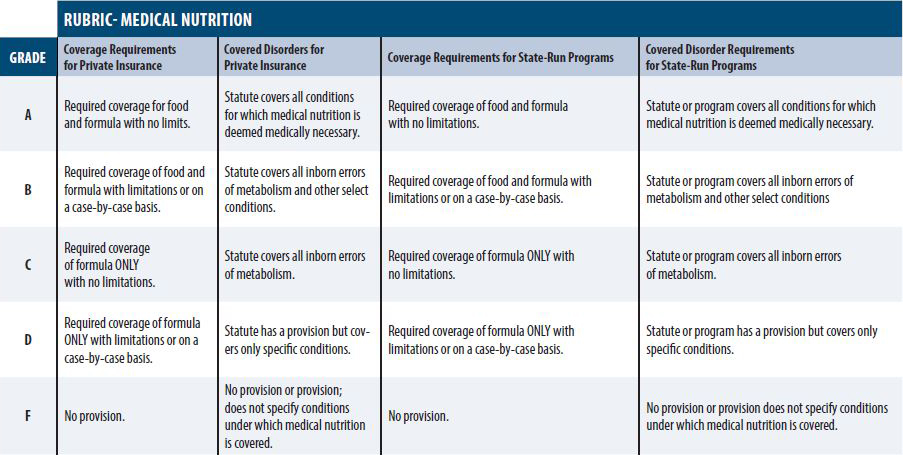NORD supports robust medical nutrition coverage for any condition for which medical nutrition is a medically necessary component of effective treatment.
Medical nutrition is defined under the Federal Food, Drug, and Cosmetic Act as “a food which is formulated to be consumed or administered enterally under the supervision of a physician and which is intended for the specific dietary management of a disease or condition for which distinctive nutritional requirements, based on recognized scientific principles, are established by medical evaluation.”1 Many rare disorders require medical nutrition to prevent serious disability, allow for normal growth in children and adults, or provide adequate caloric intake. A few examples of disorders that require medical nutrition include maple syrup urine disease, food protein-induced enterocolitis syndrome (FPIES), and short bowel syndrome. Medical nutrition for these and other conditions is the only viable treatment option available in many cases.
Unfortunately, medical nutrition is expensive and often not covered by insurance. For example, the average annual cost of formula for the rare disease phenylketonuria (PKU) can be up to $12,000, depending on factors such as age.2 Many insurers decline to cover medical nutrition because FDA does not regulate it as a drug. Additionally, insurers may view medical nutrition as elective in nature, instead of the life-saving treatment that it is.
Insurance coverage of medical nutrition for special dietary use is inconsistent and varies widely depending on a patient’s diagnosis, plan type, and state. Some states require that eligible private plans sold within their state provide coverage of medical nutrition, but only for inherited metabolic diseases such as PKU. More recently, states have begun to expand coverage to other conditions that require specialized nutrition. These treatments can be lifesaving, but patients still encounter financial barriers.
Some states also mandate coverage through their Medicaid programs. However, many states that mandate coverage of medical nutrition in Medicaid frequently have arbitrary limits based on cost, age, or gender. For states that do not mandate coverage through Medicaid, a few have chosen to provide access to medical nutrition through other publicly funded health programs or provide coverage on a case-by-case basis, which can lead to highly variable access. Additionally, some states provide medical nutrition through Medicaid or a publicly funded program in practice, but don’t mandate this coverage through state statutes or regulations. Coverage that is not codified can be discontinued abruptly and without warning, leaving patients scrambling to obtain their medical nutrition products.
In states without comprehensive medical nutrition coverage mandates, patients are usually forced to pay for medical nutrition out-of-pocket. For costly forms of medical nutrition, this situation can leave patients with a devastating decision of whether to pay the mortgage or buy the critical nutrition products required for their condition.
NORD’s State Report Card grades states separately on the following four categories. An overall state grade for Medical Nutrition was determined by taking the average of these four separate grades:
States that limited the administration of medical nutrition (via tube, formula only, etc.), placed age or monetary restrictions on coverage, or provided medical nutrition coverage on a case-by-case basis earned lower grades than states that had no such restrictions. Similarly, states with more covered conditions (ideally providing coverage of medical nutrition whenever it is medically necessary) earned higher grades than states with fewer covered conditions.

Click to enlarge